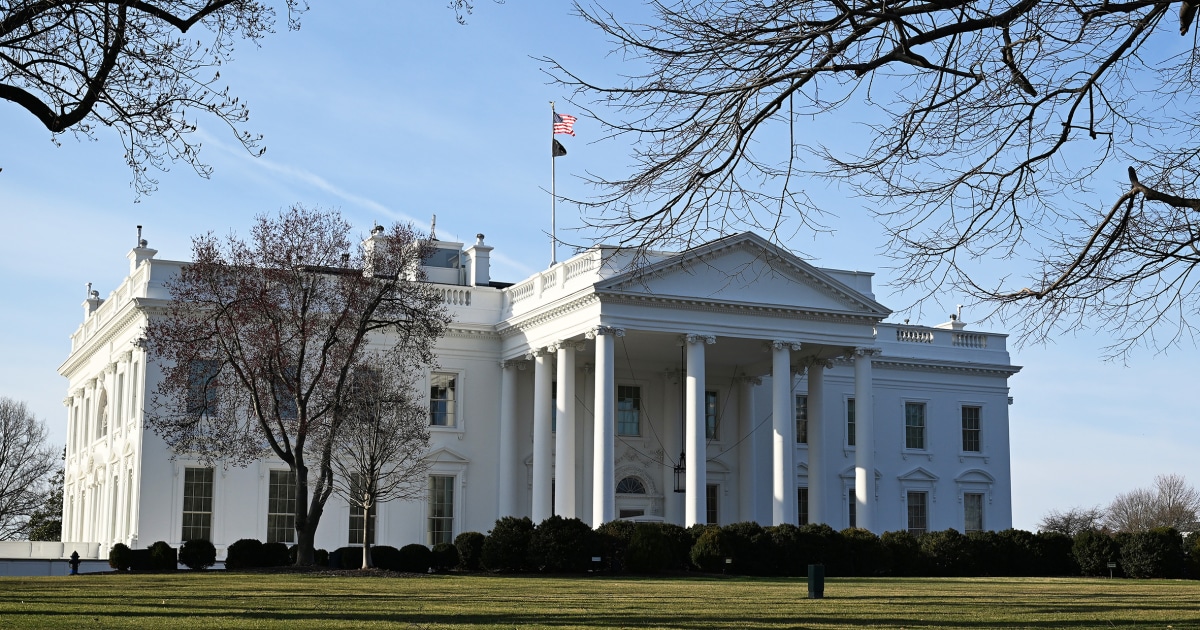If you spent some time on social media over the Labor Day weekend, you probably saw an odd video related to the White House — but unlike most odd videos related to the White House, this one didn’t appear to have anything to do with Donald Trump.
The brief clip was difficult to make out, but it appeared to show someone throwing a black bag and a long white item out a window on the second floor of the east side of the building. Given that the second floor is where the president and first lady live, the video sparked all kinds of speculation online.
It was against this backdrop that The Associated Press reported:
President Donald Trump said Tuesday that a video circulating online that showed items being tossed out of an upstairs window of the White House was created with artificial intelligence, despite his press team seeming to confirm the veracity of it hours earlier. Trump … told reporters that the video has ‘got to be fake’ because the windows, he said, are heavy and sealed shut.
Right off the bat, when Trump contradicts his own team, it’s going to generate some interest. Hours before the Q&A in the Oval Office, the White House press office has confirmed the video is real and said it showed a “contractor who was doing regular maintenance” while Trump was away. If the president had said the same thing or even just referred questions to the White House staff, most of the political world likely would’ve shrugged and moved on.
Instead, Trump said the video — that his team had already confirmed as real — wasn’t real and was instead likely “AI-generated.”
And then he went just a bit further. The New York Times reported:
President Trump on Tuesday revealed a new strategy he could employ for dealing with unwelcome or unflattering information: blame artificial intelligence. With fake videos generated by A.I. swirling around the internet, it’s become increasingly difficult for many users of social media to separate truth from fiction — a point Mr. Trump both lamented and said he could potentially use to his advantage.
“If something happens, really bad, just blame AI,” the Republican said, apparently in jest.
I realize the line was delivered as a joke, but this isn’t the first time he’s raised such a claim. In March 2024, Democratic Rep. Jerry Nadler of New York unveiled a highly unflattering video of Trump’s cognitive lapses, prompting the Republican to complain, “artificial intelligence was used by them against me.”
The video montage, however, was entirely real. Trump was eager to blame AI to explain away the clips that made him look awful, but they were legitimate anyway.
The larger point is that Trump probably wasn’t kidding, at least not entirely, when he said he’d “just blame AI” when confronted with real embarrassments, because he’s already on record doing exactly that.
There’s a quote that’s often attributed to political theorist Hannah Arendt: “This constant lying is not aimed at making the people believe a lie, but at ensuring that no one believes anything anymore.” As it happens, Arendt didn’t actually say this (at least not exactly), but the quote resonates because of its salience: Trump obviously tries to get people to believe lies all the time, but nearly as often, the president tries to get people to give up on the idea that facts exist.
His latest comment on the subject appeared designed to plant a seed in the minds of his followers: If you see something that paints the Republican administration in an unflattering light, it’s probably best to assume it was created by a computer.
The response to the mysterious case of the open White House window, in other words, is part a pattern, and there’s every reason to believe the problem will get worse before it gets better.

